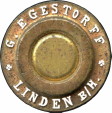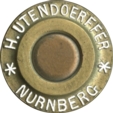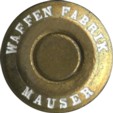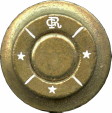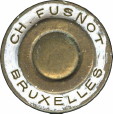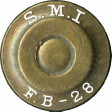
The latter part of the 19th Century was one of profound political change throughout Europe and it had a direct impact on military decision making. One must remember that it was an era before mass communication on the one hand and giant technological strides being made in firearm and explosives research on the other hand. Military development was cloaked in rumour which led military powers in Europe being hesitant to implement changes in fear of some technological breakthrough invalidating huge investments practically overnight.
Paul Mauser was at this time conducting tests to determine the most efficient caliber utilising black powder loads. He refined his M.71/84 design and strengthened the rifles to compensate for the additional pressures when he established the 9,5mm bullet provided the best ballistics with what powder he had available at the time. This resulted in the M.1887 chambered for the 9,5x60R and was the smallest caliber lead bullet military cartridge that was adopted by any military power and represented the epitome of black powder cartridge design, although it was already obsolete at the date of introduction. Mauser pitched his idea to the German Government, but they were not interested, neither were the British, who were already moving toward the development of the .303. In 1884 French chemist Paul Marie Eugène Vieille developed nitro-cellulose based smokeless propellant, an idea that revolutionised arms development overnight and was the disruptive technology that changed the face of Europe and the world forever. Mauser however, made one last stop with his design in Constantinople in 1886. The Ottoman Empire was still equipped with American Remington and with Martini-Henry Single Shot Rifles and a sprinkling of American Winchesters, his new development received the recognition it deserved.
After testing by the Turkish army, a contract of 500,000 rifles was awarded to Mauser. The Turkish government had to have been aware of events unfolding in Europe and their contract with Mauser included a specific provision that Turkey was “to be informed of any rifle improvements patented by Paul Mauser during the contract period and could require that these improvements be incorporated in the rifles still to be delivered, and that Turkey could require Mauser to complete the contract with any new model.” Mauser wasted no time in experimenting with smokeless powder. He conducted extensive tests and found that despite the French adoption of the 8mm cartridge, a 7,65mm bullet provided superior ballistics and proceeded to design a rifle that utilised a 5 shot magazine below the receiver that was loaded through from the top of the open action. This was the development of the 7,65×53 Mauser in 1889 and the first country to do intensive tests were the Belgians who completely re-armed with the new rifles with superior ballistics. At this stage Mauser had delivered 220,000 of the M.1887 rifles to Turkey. After examination of the Mauser M.1890 in 7,65mm, the Turkish army used the clause inserted in their original contract and formally adopted the M.1890 rifle. The remainder of the contract of 280,000 rifles were delivered as the m.1890 Turkish Mauser in 7.65x53mm.
Smith W. H. B, Mauser Rifles and Pistols. Sportsman’s Vintage Press 2014
Elks K – Ammunition with Turkish and Arabic Markings. Solo Publications 2018

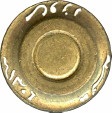

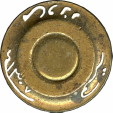

The top of the headstamp is MAUSER. The text at the 4 o’clock position is the Turkish word for SYSTEM. At the 8 o’clock position is the date with the first specimen being 1306 which corresponds to 1890. The second specimen is 1307 which corresponds to 1891.


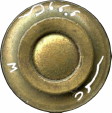
No headstamp version by Winchester. Second specimen is a new unfired case with interesting headstamp by Winchester with Arabic text. The top is for MAUSER and the text at the 4 o’clock position is for SYSTEM.
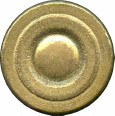

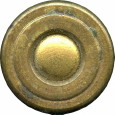

Folded head construction by UMC
